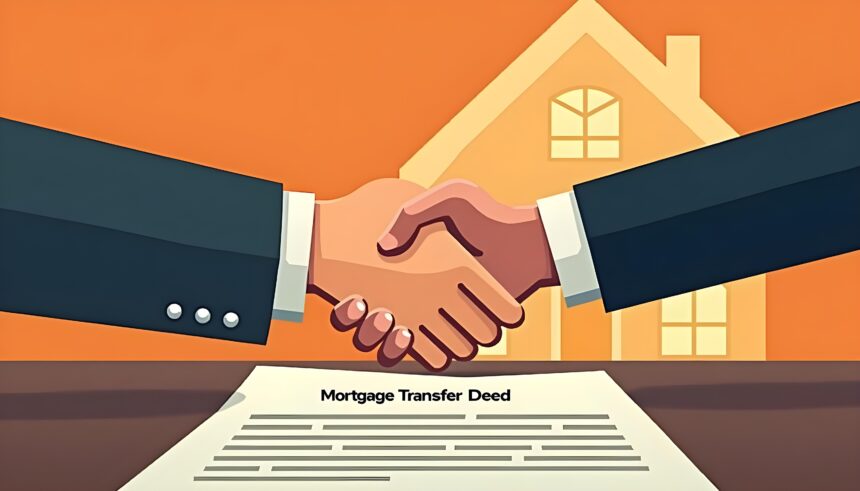When dealing with property or business loans, understanding the legal documents that accompany them is crucial. Two such important legal agreements are the Transfer of Mortgage Deed and the Deed of Hypothecation. Here’s a detailed breakdown of what these documents entail, how they work, and why they are essential in financial transactions.
What is a Transfer of Mortgage Deed?
A Transfer of Mortgage Deed refers to the transfer of the rights of a mortgaged property from one mortgagee (lender) to another. This happens when the original mortgagee cannot continue managing the mortgage or decides to sell the rights to a third party.
1. Basic Definition
A Transfer of Mortgage Deed occurs when the original lender transfers the mortgage rights to another individual or institution, passing all responsibilities and entitlements to the new mortgagee.
2. Structure of the Deed
The deed will contain important details such as:
- The original date of the mortgage agreement.
- Names of the parties involved (mortgagor and mortgagee).
- The sum of money for which the mortgage was taken.
- Terms of repayment and interest.
3. Purpose
If the original lender is unable to manage the mortgage, they may choose to transfer the mortgage to another party, who will then take over all rights and responsibilities associated with it.
4. Terms and Conditions
The Transfer of Mortgage Deed ensures that the new lender (transferee) has the right to collect all future payments, including outstanding interest and principal from the borrower.
5. Legal Handover
Once the deed is executed, the original mortgagee signs over their rights to the new mortgagee, who assumes full responsibility. The original lender no longer has any claims or obligations toward the mortgaged property.
6. Final Settlement
After the transfer is complete, the new mortgagee will enforce the terms of the mortgage as per the original agreement. The borrower will continue making payments to the new mortgagee, and the original mortgagee is released from all responsibilities.
What is a Deed of Hypothecation?
A Deed of Hypothecation is a legal agreement where a borrower pledges movable assets as security for a loan, while retaining possession of the assets. It is commonly used in business loans to secure funds against assets like machinery, inventory, or equipment.
1. Purpose
The primary purpose of a Deed of Hypothecation is to allow businesses to obtain loans without transferring ownership of their movable assets. These assets act as collateral for the loan.
2. Movable Assets
Unlike a mortgage where immovable property (like land or buildings) is pledged, hypothecation involves movable assets such as:
- Machinery
- Inventory
- Equipment These assets remain in the borrower’s possession and are used in daily operations.
3. Legal Framework
Although the borrower retains ownership and control of the assets, the lender holds a “charge” over them. If the borrower defaults on the loan, the lender has the right to take possession of the assets and sell them to recover the loan amount.
4. Common in Business Loans
Deeds of Hypothecation are especially common in commercial and industrial loans where companies need financing to acquire equipment or stock but don’t want to surrender control of these assets.
5. Interest Rates and Repayment
Interest rates for loans backed by hypothecation are often higher than for traditional mortgages, reflecting the higher risk for the lender. The deed outlines the borrowed amount, interest rates, and the repayment schedule.
6. Insurance and Maintenance
The borrower must insure the hypothecated assets and maintain them in good condition, as they serve as the lender’s security. This ensures the lender’s collateral remains valuable throughout the loan period.
7. Repayment Terms
The deed stipulates the repayment terms, including regular payments of interest and principal. Borrowers must adhere to these terms, failing which the lender may take action.
8. Default Conditions
If the borrower defaults on their loan, the lender is entitled to take control of the hypothecated assets, sell them, and recover the outstanding loan amount. This provision is clearly stated in the deed and agreed to by the borrower at the time of signing.
Comparison of Transfer of Mortgage Deed and Deed of Hypothecation
- Nature of Asset: A Transfer of Mortgage Deed involves immovable property (real estate), while a Deed of Hypothecation deals with movable assets (machinery, inventory, etc.).
- Ownership: In a mortgage, the property may eventually be foreclosed in case of default, transferring ownership to the lender. In hypothecation, the borrower retains possession of the assets until they default.
- Purpose: The Transfer of Mortgage Deed involves transferring loan rights to a new lender, while a Deed of Hypothecation is used to secure a loan without losing operational control of movable assets.
Conclusion
Both Transfer of Mortgage Deed and Deed of Hypothecation play significant roles in property and business financing. While the former is essential for managing and transferring mortgage rights, the latter helps businesses secure loans without giving up control over their assets. Understanding these legal instruments ensures smooth financial transactions, safeguarding both lenders and borrowers.
If you’d prefer to have everything handled for you seamlessly, you can click here and contact us at verified.realestate. Our team of experts is here to provide comprehensive support and ensure a smooth and secure property buying experience.
